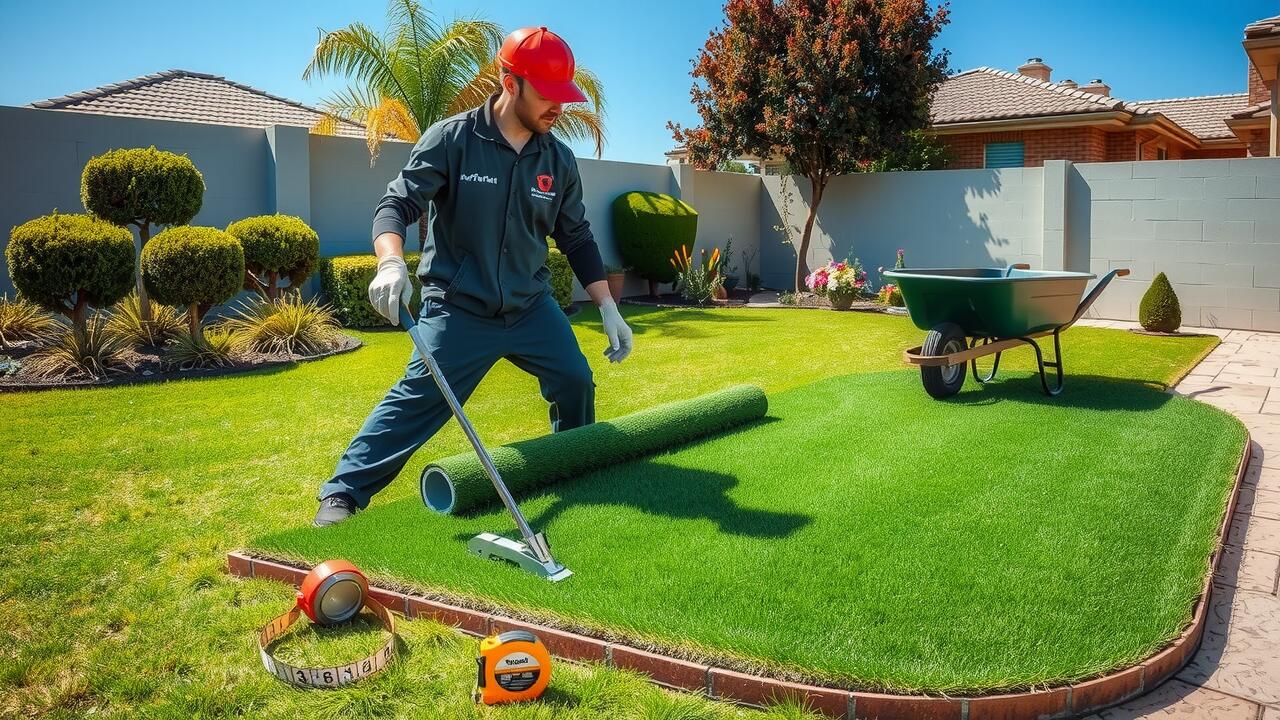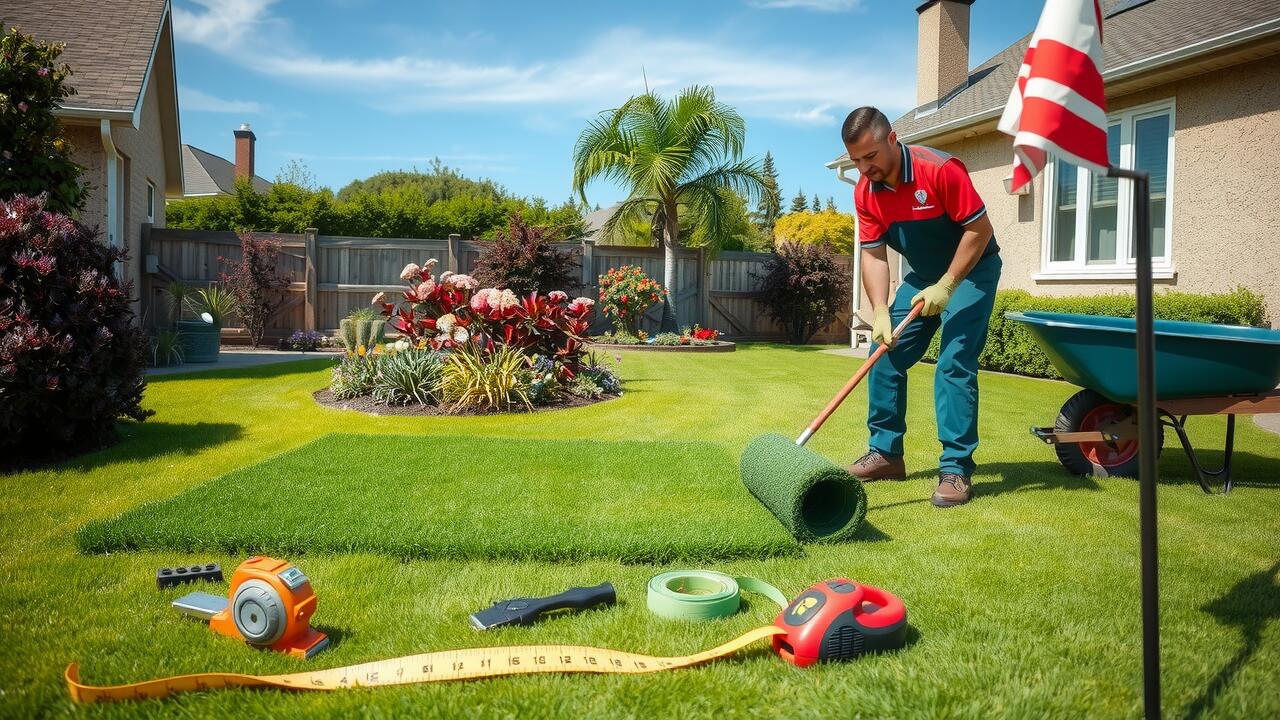
Base Layer Installation
Before installing artificial grass, creating a robust base layer is essential for ensuring durability and proper drainage. The base layer serves as the foundation for the grass, providing stability and preventing it from shifting over time. Typically, a combination of gravel and sand is used to form this base. The gravel acts as a drainage layer that helps avoid water pooling, while the sand provides a level surface for the grass to rest upon.
Proper preparation of the site is critical during this phase. Removing any existing grass or debris is the first step, followed by leveling the ground to create an even surface. After the site is cleared, the base layer material should be evenly distributed and compacted. This process promotes a solid foundation that supports the artificial grass, contributing to its performance and longevity.
Choosing the Right Material for the Base
Selecting the right material for the base is crucial when installing artificial grass. Typically, a mixture of crushed rock, gravel, or decomposed granite is recommended due to their ability to facilitate drainage while providing stability. These materials effectively create a solid foundation that supports the weight of the artificial grass and allows for proper water runoff. Ensuring the base material is clean, free from organic matter, and properly graded will significantly enhance the longevity and performance of the installation.
In addition to stone-based options, certain synthetic materials can also serve as base layers. These often include foam or rubber products that provide extra cushioning and drainage, making them ideal for recreational areas or playgrounds. The choice of material may vary depending on the intended use of the artificial grass surface. Evaluating factors such as foot traffic, climate, and the specific requirements of the area will aid in determining the most suitable base material for a successful installation.
Compaction of Base Material
Proper compaction of the base material is crucial for the longevity and stability of artificial grass installations. A well-compacted base prevents uneven settling over time, which can lead to areas of pooling water and uneven wear. This foundational step helps create a solid platform that supports the turf, ensuring it maintains its shape and integrity under foot traffic.
Various tools and methods can be employed for effective compaction, such as using a plate compactor or a hand tamper. Achieving the right density in the base material directly affects the overall performance of the artificial grass. If the base is not adequately compacted, it may result in a less durable surface that could prematurely degrade, hindering the aesthetic and functional qualities of the synthetic turf.
Importance of Proper Compaction
Proper compaction of the base layer is crucial when preparing for the installation of artificial grass. A well-compacted base ensures stability and durability, preventing issues such as settling or shifting over time. Without adequate compaction, the underlying soil can lead to uneven surfaces, which might compromise the aesthetic and functional aspects of the artificial grass.
Additionally, effective compaction minimizes the risk of water pooling and drainage problems. Inadequate compacting can create soft spots that retain moisture, which may negatively affect the integrity of the grass material. Ensuring that the base is compacted to the appropriate level ultimately supports the longevity and practicality of the artificial grass, offering a reliable and visually appealing surface for outdoor spaces.
Edging Installation
Edging installation is a crucial step in preparing for artificial grass. It helps define the boundaries of the lawn and maintain the integrity of the landscape. Choosing the right edging material can make a significant difference in both aesthetics and functionality. Common options include plastic, metal, and wood. Each has its pros and cons, depending on the desired look and the specific requirements of the installation. Properly installed edging also aids in keeping the underlying base layer intact, preventing the artificial grass from shifting or sagging over time.
Once selected, the edging must be installed securely to ensure durability. It should be positioned flush with the ground to create a seamless transition between the artificial grass and adjacent surfaces. Using stakes or spikes to secure the edging can enhance stability and prevent movement, especially in areas with high foot traffic. Ensuring the edges are clean and straight contributes to a professional finish, making the overall appearance of the artificial grass more appealing. Maintaining these borders is essential for a neat and organized look.
Different Types of Edging Solutions
Edging plays a crucial role in maintaining the appearance and functionality of artificial grass installations. Various types of edging solutions are available to accommodate different landscapes and preferences. Timber edging is a popular option due to its natural look and ability to blend with outdoor settings. Metal edging provides a more modern aesthetic and is highly durable, resisting warping and damage from elements. Plastic edging is lightweight and often cost-effective, offering basic containment for the grass while preventing soil erosion.
When selecting an edging solution, it is important to consider factors such as flexibility, durability, and ease of installation. Concrete curbing creates a permanent barrier that can enhance the design of the yard while providing excellent support for artificial grass. Landscape bricks and stones can add a decorative touch, allowing for creative designs around flower beds or paths. Choosing the right edging not only complements the overall design but also ensures the longevity and stability of the artificial grass installation.
FAQS
What is the purpose of the base layer when installing artificial grass?
The base layer provides stability, drainage, and a smooth surface for the artificial grass, ensuring that it remains even and durable over time.
How do I choose the right material for the base layer?
The right material for the base layer typically includes crushed stone, gravel, or decomposed granite, as these materials provide excellent drainage and compaction.
Why is proper compaction of the base material important?
Proper compaction prevents sinking and shifting of the base layer, which can lead to uneven surfaces and damage to the artificial grass over time.
What are some common types of edging solutions for artificial grass?
Common types of edging solutions include plastic, metal, wood, or concrete, each offering different aesthetics and levels of durability to secure the artificial grass in place.
Can I install artificial grass directly on soil without a base layer?
It is not recommended to install artificial grass directly on soil, as a base layer is essential for proper drainage, stability, and longevity of the grass.
